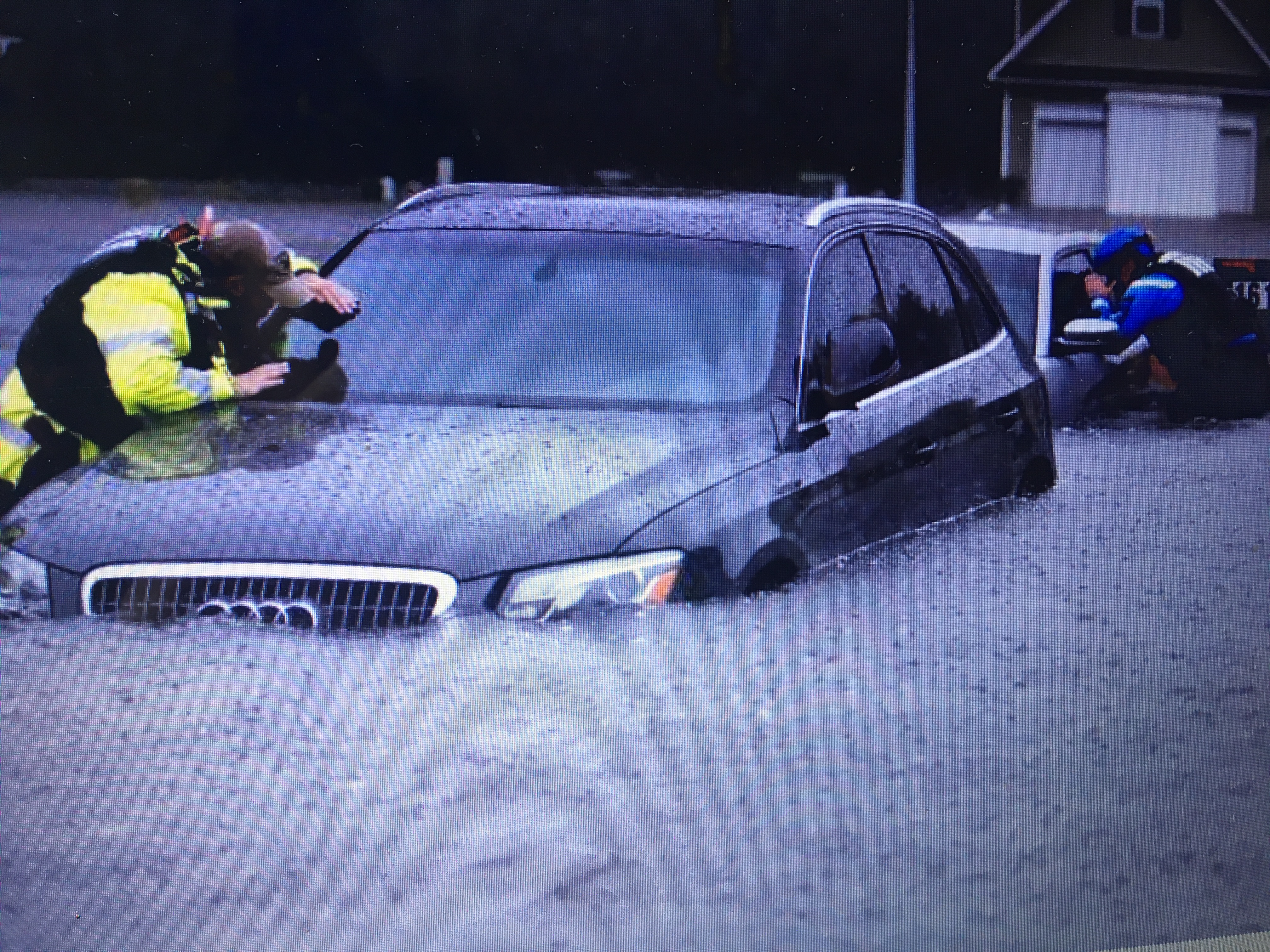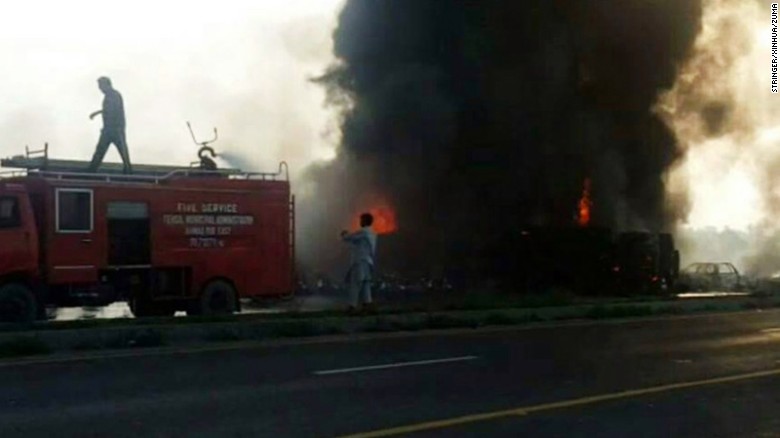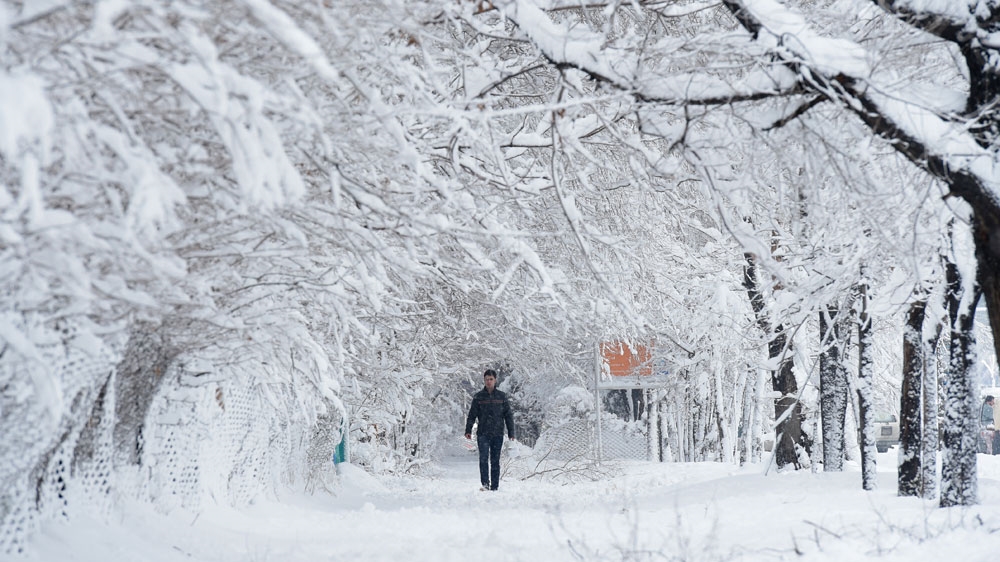Last winter, as I was riding in a car with my family through the Kashmir Valley, the driver’s phone rang. He listened carefully before frowning.
“What’s going on?” I asked.
“Man killed in avalanche.”
“Who?”
“A Russian, skier, went by helicopter.”
“Where?” I asked
.
“Where else?’’ The driver shrugged. “Gulmarg.”
Gulmarg. That’s exactly where I was taking my family for a ski trip. Gulmarg is Kashmir’s underdog ski resort, tucked in the snowy Himalayas, a place of magnificent skiing and no frills. Few foreigners visit, for reasons I will get into, and as we drew closer, I began to wonder if this was such a great idea. I looked out the window. It was now dark and snowing, and we were winding our way up a narrow road into the mountains. After we passed another military checkpoint, the driver nodded to me.
“You see that spot?’’ he said, pointing into the woods. “We saw a bear there last week.’’
My wife, Courtenay, who was sitting in the back, tapped me on the shoulder.
“Why can’t we go skiing in Austria like everybody else?”
I laughed.
“No,” she said. “I’m serious.”
I had always dreamed of skiing in Kashmir. That name alone conjures up adventure: white-toothed mountains and deep green valleys, wide open slopes and tough highland people. Draped in a mysterious beauty, Kashmir is one of those places most of us have heard of, but know little about. And I had a personal agenda. My children are among that strange breed of Americans who have never lived in the United States. They were born in Kenya, raised (so far) in Africa and India, products of the tropics who go to school all year round in shorts, and I wanted them to experience snow.
So one weekend about a year ago, while we were sitting around our apartment in New Delhi, I suggested a trip to Kashmir’s winter wonderland.
“Are you kidding?” Courtenay said. “Isn’t there an active conflict up there?”
“I wouldn’t necessarily call it a conflict,” I said.
“What would you call it then?”
“A dispute, maybe?
I’m an average skier, trained on the snowy pimples of the Midwest, with a few lucky trips to Vail and the Alps. But I love skiing, and the thought of plunging down the Himalayas, the world’s tallest mountains, fired me up. I soon learned that Kashmir’s ski spot, Gulmarg, is huge (about seven times the size of Jackson Hole), with some runs so long they take all day to ski. I also learned that Gulmarg is cheap, never crowded and blessed with perfect high-altitude, inland snow. One experienced skier described it as being so soft and feathery that skiing through it was like floating through a forest. I wanted to float through that forest.
But before getting more excited, I needed to check out the safety of the area. This was a family trip, after all, and my wife was right: Kashmir is contested territory, torn between India and Pakistan. It’s a long story, flaring up in the 1940s, when the British divided the subcontinent into Hindu-dominated India and Muslim-dominated Pakistan. The people of Kashmir fell in between, religiously and geographically. They were ruled by a Hindu maharajah, though the population was mostly Muslim. And their area, with its fertile orchards, deliciously cool climate and legendary scenery, lies right between what is now India and Pakistan.
After the British left, India and Pakistan fought three wars over Kashmir, and today the conflict has settled into a thorny standoff, with India controlling most of Kashmir and Pakistan a smaller slice.
Many Kashmiris don’t want either country controlling them: They want independence, and a small, dogged separatist movement operates in Kashmir, attacking police posts and civilians believed to be collaborators. Gulmarg, however, is rarely affected; it lies in a nook of the Kashmir valley tightly controlled by the Indian military.
I was obsessed with getting us there, but had no idea how to pull this off. As luck would have it, right when Courtenay and I were haggling over the trip, we were invited to a dinner party in New Delhi where I was seated near a charming, fit-looking Indian with a bald head and handlebar mustache. His name was Akshay Kumar and he was a former champion skier. He had skied Gulmarg countless times, ever since he was a child, and he and his wife, Dilshad Master, run an adventure tour company,
When I asked him if Gulmarg was safe, he said: “Very. I’m taking some families up there in a couple of weekends. Want to come?”
I now had the necessary cover.
Akshay offered to do all the hard work: organizing ski rentals, lift passes, hotel bookings and, most important, the seamless string of large bearded men who would schlep us around. He made what could have been a complicated trip simple and safe. He also made it inexpensive. The kids’ lift tickets were less than $3 (that’s not a typo). A gondola day pass was $25. Equipment rental was about the same and the gear was solid: parabolic Atomic skis and Salomon boots. A ski trip to Austria, for example, would have cost us thousands of dollars.
I cover South Asia for The New York Times, and I was working on a story in Kashmir that same week on the life and times of a young militant named Sameer Tiger. Like many others, Sameer Tiger had been pulled into the insurgency by a mix of anger, naïveté and lack of economic opportunity. And, like many others, he went down in a hail of bullets, cornered by security forces. I had spent weeks researching him and was familiar with flying in and out of Srinagar, Kashmir’s biggest city. I also knew that the hot spots where the militants conducted their attacks tended to be in southern Kashmir, miles away from Gulmarg.
“Like ice, Daddy, like ice”
As I waited at the Srinagar airport for my family, I was giddy with excitement. It had just snowed and the trees were delicately coated, the roads wet and shiny. When I picked everyone up, Asa, our 7-year-old, pointed to a lumpy bag tied to the taxi’s roof and asked, just as I knew he would, “What’s that?”
I untied the bag and told him to put his hands in. “Ooh, that’s cold,” he said, turning over his first clump of snow. “Like ice, Daddy, like ice.”
I would have loved to linger in Srinagar, an old town built on a lotus-covered lake, where you can stay in a gorgeous houseboat, wake up with kingfishers plunging into the lake next to you, and then stroll through rose-filled gardens sculpted by Moghul emperors hundreds of years ago. But we only had the weekend to work with, so we had to skip all of this.
It’s about an hour-and-a-half drive from Srinagar to Gulmarg, and Courtenay was quiet the entire way. I did not blame her. Kashmir isn’t a war zone, but everywhere you look, you see Indian soldiers running checkpoints, patrolling the markets and peeking their helmeted heads out from the turrets of scarred-up gun trucks. The American government warns citizens to stay away, though I feel that’s overblown. I’ve been to Kashmir now more than half a dozen times and I’ve never heard a single gunshot. The Indian troops exert control in just about all parts of the valley, especially in Srinagar, and I know several other expat families who have visited, and all said they felt safe.
With evening approaching, we left the city on a smooth highway running west. The long shadows of minarets fell across the road. The men in the villages we passed were bundled up in heavy woolen cloaks called pherans. When we stopped to buy water, I noticed one man with a large round bulge under his pheran. When I asked him what it was, he lifted up his cloak to reveal a small pot of burning coal he was cradling to keep himself warm.
This is what I love about Kashmir. While India is such a feast of the senses — the food, the fashion, the colors, the deities, the clanging of brass bells and the constant whiffs of incense and fragrant oils — Kashmir radiates its own distinctive charm.
We crossed a river. This is when the driver’s phone rang, and after we heard about the deadly avalanche and then the bear in these same woods, the car fell silent.
The mood brightened when we pulled into the Khyber hotel, Gulmarg’s fanciest. It was a supersize ski chalet, and its green pointed roofs were dusted with snow. The kids’ eyes were peeled for bears. But as soon as we stepped into the lobby, with its dark, gleaming wood and fine carpets, I spotted what I really wanted to see: children. Packs of them.
Clearly this was a family destination, and in the Khyber’s downstairs rec room, Asa and our other son, Apollo, 9, instantly bonded with their Indian comrades over foosball and air hockey. I had to pry them out of there. There aren’t any bars in Kashmir (it’s dry) or anything resembling an après-ski scene, so we went to sleep early.
The next morning we mustered outside in the hotel’s portico, waiting for our skis to be delivered. I thought we’d just slap them on and slide the couple of hundred yards to the base of the slopes, but no, a Jeep dispatched as part of Akshay’s operation zoomed up with three men inside. Kashmiris are some of the warmest, most hospitable people, and before we climbed into the Jeep, the men greeted us with big hugs. When we climbed out, they insisted on putting on our skis. I had one guy on my left, another on my right and a third young man kneeling in the snow at my feet.
“Guys, guys, guys,” I said, trying to wiggle free. “I can put on my own skis.”
But the young man at my feet either didn’t understand or didn’t care. And for the first time since I was about 5, I watched someone untie my shoes and carefully pull them off.
The sky was a flawless blue, the air peppermint fresh. It wasn’t even that cold — maybe 30 degrees. Kashmir rarely gets bitterly cold; Gulmarg lies at the same latitude as Atlanta. All around us, the white teeth of the Himalayas gleamed, and from nearby chimneys I smelled wood smoke. It was the most romantic alpine scene I had ever entered, and part of it was the scale. Behind the mountains that stood in front of me were even higher mountains, and behind them, the real titans. On a clear day, from the top of Gulmarg, you can see into Pakistan and glimpse K2, the second tallest mountain in the world after Everest.
Gulmarg doesn’t feel like a ski resort; it feels like a village. At the base of the gondola, men with wooden boxes strapped to their shoulders sold chocolate bars, selfie sticks and cigarettes. I don’t think I’ve ever seen a pack of cigarettes on a ski slope.
Others wielded silver samovars and poured steaming cups of kahwah, a light Kashmiri tea, made from saffron and other spices, that carries a delightful aroma. Of the several hundred people on the mountain that day, most were not skiers but Indian families content to pay a few rupees for a ride on a sled. I watched the sled wallahs — a string of young Kashmiri men with battered toboggans — begin their long trudge uphill. They were working for the equivalent of a few dollars a day and didn’t have the money to take the lift. They slowly made their way up the mountain, heads down, bodies leaning forward, the wind tugging at their pherans.
Akshay arranged for my sons to take lessons with a Kashmiri skier named Ishfaq. He told them to call him Eeesh. We waved to Eeesh and the two roly-poly shadows beneath him as they tramped off to the bunny hill.
Courtenay and I hired our own guide, Wali. Wali was in his late 40s with curly gray hair and orange mirrored shades. He wore no hat. He had been working on these slopes since he was 8, beginning as a sled wallah. He had never been to school. When I asked Wali what he loved about skiing, he looked off into the hills and smiled.
“I love it for the money,” he said.
It wasn’t exactly the poetic answer I was looking for, but fair enough. In strife-torn Kashmir, where there aren’t many jobs for an athletic, adventurous man, this was a good one.
Gulmarg’s slopes cover everything from green to double black diamond, but few are marked. Part of the mountain is groomed, but advanced skiers love the ungroomed, backcountry skiing. The gondola reaches around 13,000 feet, one of the highest in the world. Some skiers hike up even higher or take helicopters to virgin spots. Gulmarg’s vertical drop, a measure of the altitude from where you start to where you finish, can be as much as 6,000 feet. With good snow, some runs stretch more than four miles. They can take the better part of a day and end in the woods, near some old temples.
We started with a medium-difficult run, taking the gondola to the middle of the mountain (Gulmarg has one gondola, one chair lift and several tow ropes). We stepped off into thick snowpack. This was mid-February, the best time for snow; sometimes the area gets eight feet of powder.
Wali led the way, dropping into a wide track that ran through Himalayan cedar trees. He stopped intermittently to look back at Courtenay and me.
“Up and down, up and down,” he shouted as we made our turns, trying to keep our skis together. “Yass, yass, that’s it. Good, good!”
As my skis cut through the snow, I felt the air against my cheeks and that addictive sense of speed. My thighs burned and occasionally I heard the sssh, sssh of a better skier descending past me, though there were only a handful of us on the slopes. It had been nearly 10 years since I had last skied, and bombing down the mountain felt as pure and intoxicating as galloping on a horse.
Courtenay agreed it was thrilling. But she was more distracted than I was by Kashmir’s misfortune of lying between two rival nations. Her take on Gulmarg was that it was “a stunning ski resort in the middle of a zone of sadness.”
We skied around some low-slung houses made of wooden planks. “What are those?” I shouted to Wali.
“Gujjar houses!” Wali shouted back.
Hmm, I thought. This place doesn’t just feel like a village — it is a village. Seminomadic Gujjar herders live here in the summer, when the slopes are carpeted with grass and wildflowers; the name Gulmarg means meadow of flowers. Just as I was thinking “How sweet is this?” — observing some culture while working on my parallel — I dug in too deep on a turn and face-planted. Courtenay and Wali didn’t hear me wipe out and kept going, leaving me in the snowbound Gujjar village by myself.
A bear of a man appeared out of nowhere. He ripped me up from the ground. After I got my hands through straps in my poles and could stand up without falling on my face again, I said, “Shukria” — thank you.
“Where from?” he asked.
“U.S.”
“America?”
“Yes.”
His bristly face broke into a huge smile.
“Welcome, brother, welcome.”
Paradise on Earth
For lunch, we met up with our children at Hotel Highlands Park on the slopes. Again, this was not a Western imitation. We didn’t thump along in our ski boots in a packed cafeteria, pushing a tray along a track for a $10 cup of cocoa and a $25 hamburger. We sat down at a proper table in a proper restaurant and polished off a feast: naan bread, curried vegetables, fresh yogurt and an exquisite lamb dish of tender meat hammered flat and rolled into a baseball-size meatball. The hotel felt like a hunting lodge; deer heads and bearskin rugs hung on the walls.
I hadn’t seen any other foreigners, so when I heard an American accent down the hallway, I was curious. I wandered through the lodge, pushed open a door and found three rugged, sun-tanned guys sitting on cushions in a cozy, wood-paneled room heated by wood-burning stoves.
“What do you guys do here?”
“We’re the ski patrol,” said one.
His name was Luke. He was 39 years old. He grew up in Alaska, became an avalanche forecaster and a paramedic and came to Gulmarg seven years ago to run the ski patrol.
“It’s the warmth of the people,” he said. “That’s what drew me here.”
He explained that Gulmarg has 17 ski patrollers with snowmobiles to rescue injured skiers. Avalanches were always a risk but only in the off-piste areas, he said, like where the Russian tourist was skiing on the day we arrived.
After lunch, I watched my sons ski. Eeesh had taught them well. Asa turned back and forth, carving large S’s and ending with a confident snowplow. Apollo was less orthodox. He shot down the bunny hill like a bullet.
“Stop! Stop!” Courtenay yelled as he approached the bottom.
I doubt he heard but somehow, right before he was about to crash into us, he stopped.
The next morning was sadly our last. I persuaded Wali to take me higher on the mountain. When we got off the chair lift, we were by ourselves. The views were breathtaking. It was so bright, so clear, so crisp, so still. I just wanted to stay up there and stare at the jagged white mountains and etch those images into my brain.
I was reminded of a Persian couplet inscribed long ago on a pavilion in one of Srinagar’s majestic gardens: “If there is a paradise on earth, it is here, it is here, it is here.”
I gazed across the valley.
“You go first,” Wali hollered. “I want to watch your form.”
I didn’t know where to start. We were poised on the lip of an enormous bowl. In front of me, for as long as I could see, the snow was untrammeled. There wasn’t a single track.





